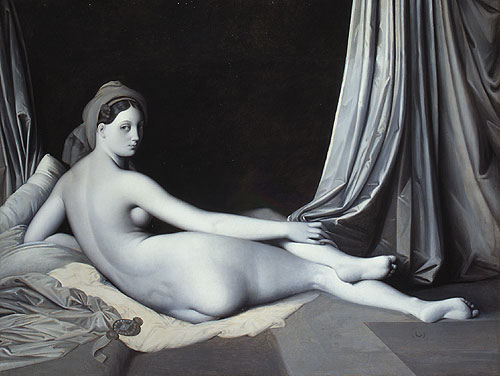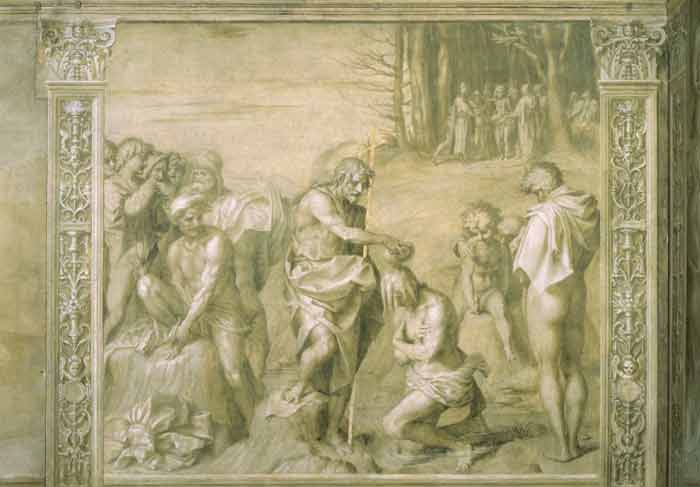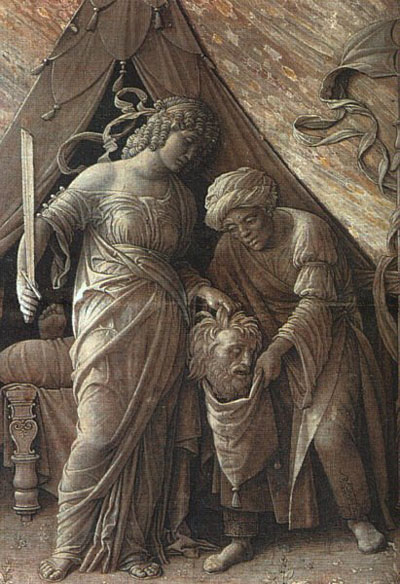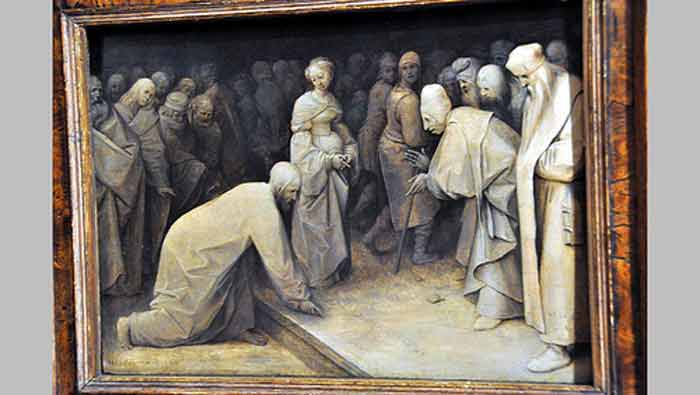Art Terms: Grisaille
Art Terms: Grisaille

Odalisque in Grisaille by Jean-Auguste-Dominique Ingres
Grisaille is a term for painting executed entirely in monochrome or near-monochrome, usually in shades of grey. It is particularly used in large decorative schemes in imitation of sculpture. Many grisailles in fact include a slightly wider colour range, like the Andrea del Sarto fresco illustrated. Paintings executed in brown are sometimes referred to by the more specific term brunaille, and paintings executed in green are sometimes called verdaille.

Grisaille frescoes by Andrea del Sarto
A grisaille may be executed for its own sake, as underpainting for an oil painting (in preparation for glazing layers of colour over it), or as a model for an engraver to work from. “Rubens and his school sometimes use monochrome techniques in sketching compositions for engravers.” Full colouring of a subject makes many more demands of an artist, and working in grisaille was often chosen as being quicker and cheaper, although the effect was sometimes deliberately chosen for aesthetic reasons. Grisaille paintings resemble the drawings, normally in monochrome, that artists from the Renaissance on were trained to produce; like drawings they can also betray the hand of a less talented assistant more easily than a fully coloured painting.
History
Giotto used grisaille in the lower registers of his frescoes in the Scrovegni Chapel, and Robert Campin, Jan van Eyck and their successors painted grisaille figures on the outsides of the wings of triptychs, including the Ghent Altarpiece. Originally these were the sides on display for most of the time, as the doors were normally kept closed except on feast days or at the (paid) request of tourists. However today these images are often invisible in museums when the tryptych is diplayed open and flat against a wall. In these cases imitation of sculpture was intended; sculpture was still more expensive than a painting even by a top master.

Grisaille by Andrea Mantegna
Illuminated manuscripts had often been produced in pen and wash with a very limited colour range, and many artists such as Jean Pucelle and Matthew Paris specialised in such work, which had been especially common in England since Anglo-Saxon times. Renaissance artists such as Mantegna and Polidoro di Caravaggio often used grisaille as a classicising effect, either in imitation of the effect of a classical sculptured relief, or of Roman painting.

Christ and the Woman Taken in Adultery by Pieter Brueghel the Elder
In the Low Countries a continuous tradition of grisaille paintings can be traced from Early Netherlandish painting to Martin Heemskerck, Pieter Brueghel the Elder (Christ and the Woman Taken in Adultery) and Hendrik Goltzius, and through the copious output of Adriaen van de Venne, to the circle of Rembrandt, and Jan van Goyen.
The ceiling frescoes of the Sistine chapel have portions of the design in grisaille. At Hampton Court the lower part of the decoration of the great staircase by Antonio Verrio is in grisaille.
Grisaille, while less widespread in the 20th century, continues as an artistic technique. Picasso’s Guernica is one example of a contemporary painting in grisaille.
Academic Study
With the 20th century’s emphasis on direct, or “alla prima,” painting, the grisaille technique lost favor with artists of the period. Today, this historic method has been incorporated into the curriculum of certain private ateliers. For example Mims Studios of North Carolina describes its grisaille training as “an intermediary stage between working from the plaster cast and working directly from life, guided by the same intensive pursuit of form.”


This Post Has 0 Comments